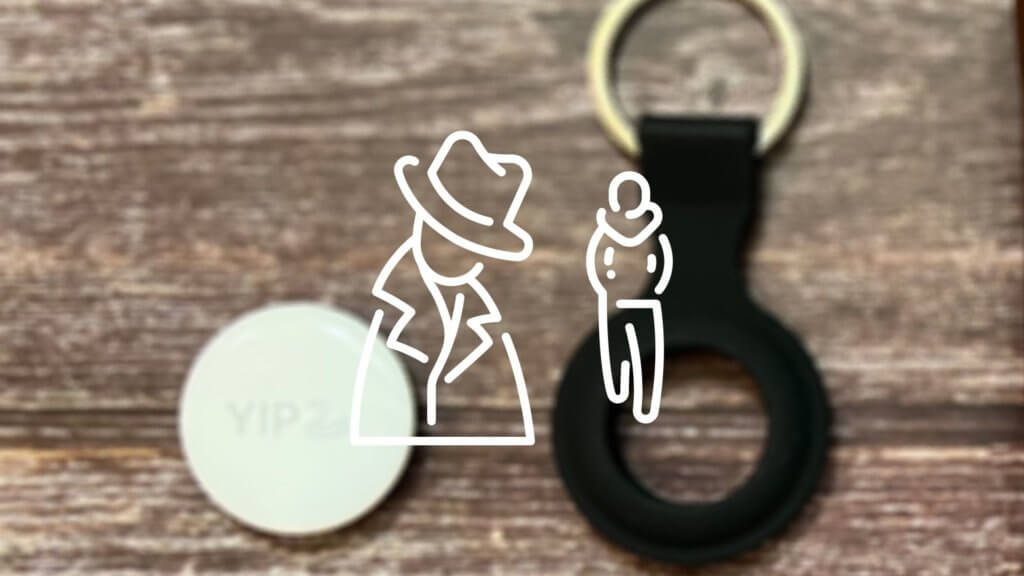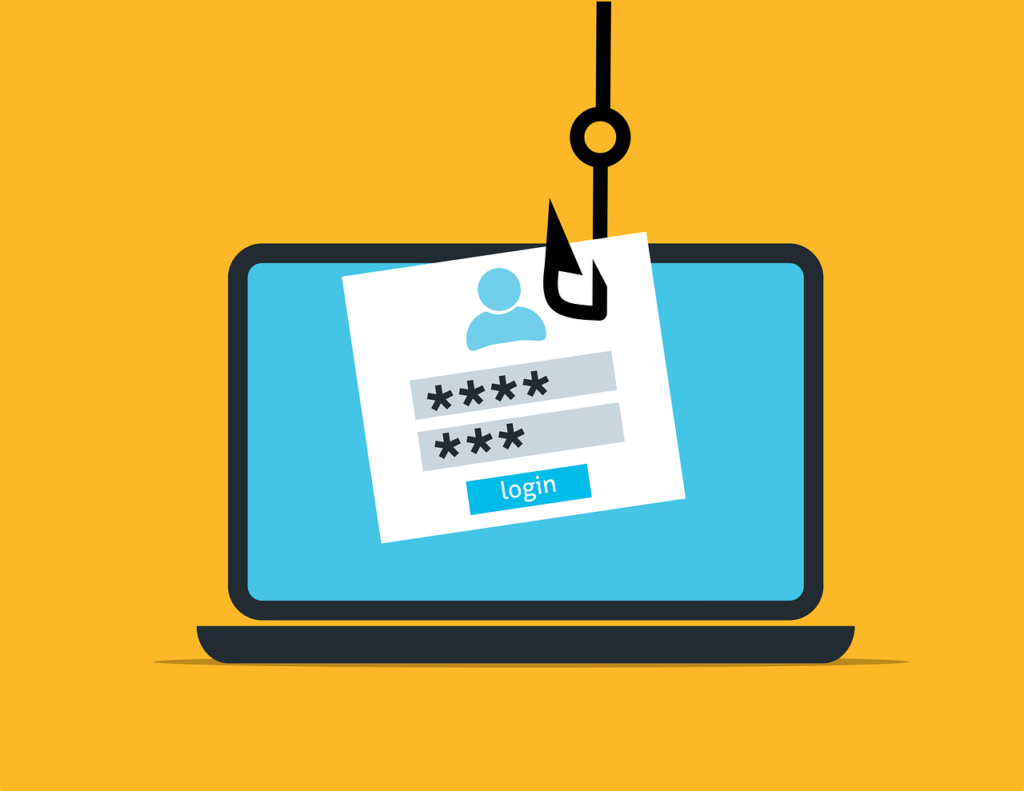Setting unique passwords is hard, especially when every app or site you use requires you to sign up for an account.
What do you resort to? 2 options, using the same password for every site, or rotating between a few passwords that you hope you get right during log in.
I get it, remembering passwords is too much of a hassle, that’s why we have password managers like LastPass and 1Password to help you store them in the cloud.
Storing passwords in the cloud trades off some security for convenience, which may not necessarily be a bad thing with their bank-grade encryption.
But what if I told you that there is a way to set passwords that are secure, unique, yet easy to remember? Sounds good?
The way we are going to do it is by establishing a structure to all our passwords we set from now, no random alphanumeric phrases, no need for creativity, no need for any bizarre words.
Let’s break down the 4 parts to this structure.
Part 1: A phrase derived from the account or site
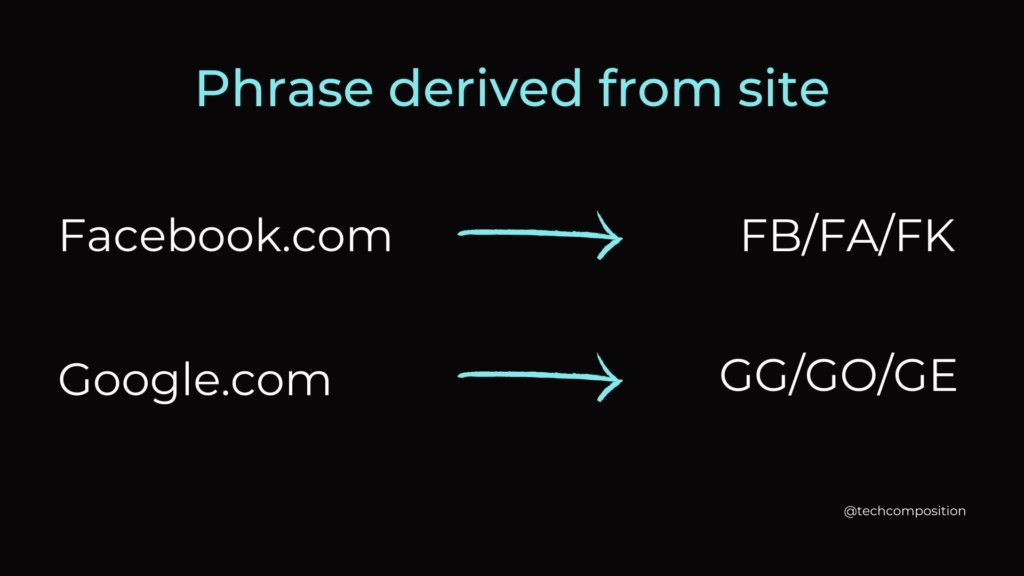
This phrase is going to be the lynchpin of the unique password we are going to create, because it serves as an important clue for recreating your password.
Everytime you want to remember your password, you would think: hmm, what’s the password I set for {Site} again?
Instead of racking your brain or clicking the forget password button, why not have a password that contains some phrase related to the account’s name?
For instance, the phrase for your Facebook account can be the initials FB, the first 2 characters FA, or the characters from both ends of the word FK.
Same goes for Google: GG, GO or GE work fine and are simple to remember too.
Since every account or site has a different name, the chances of the 2 character phrases clashing is pretty low.
Make sure the same method you chose to obtain the phrase from is used throughout all your accounts, or you won’t remember it in the future.
Of course, this easy phrase is not sufficient or secure enough for your passwords, so let’s move on to part 2.
Part 2: A common phrase you use for all your passwords
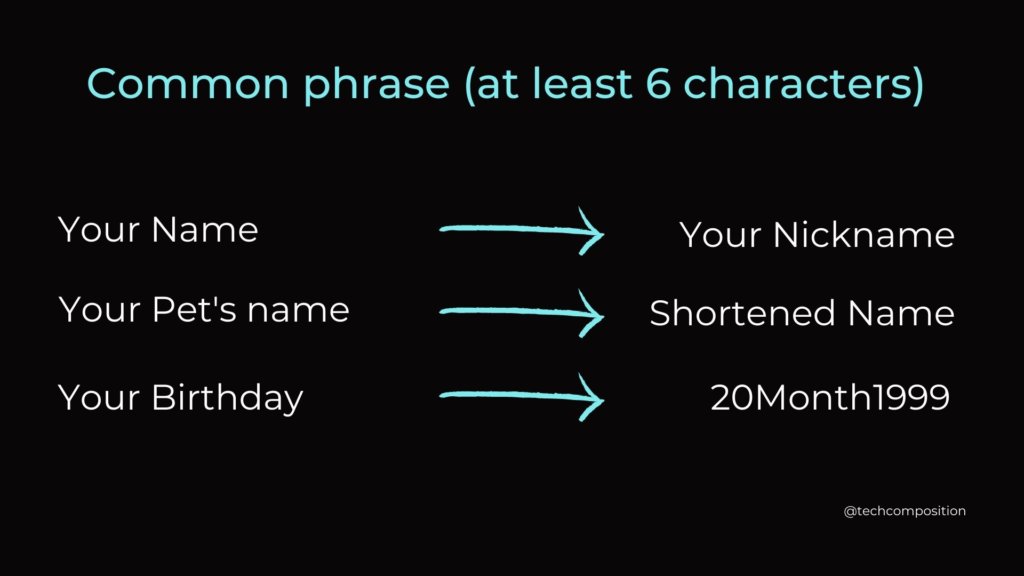
If you ever set a password before, you will know how many checkboxes we have to check, and length requirement is the most common one.
In order for our structured passwords to be used in actual accounts, we need to get it long enough.
While I lamented about people using the same passwords for each site, the objective of this part is just to add one layer of complexity to the structure.
This phrase can be your old password that you used for all your accounts previously, your nickname, your pet’s name, or your alphanumeric birthdate.
Keep in mind, this phrase must be easy to remember and is at least 6 characters long to ensure our final password meets the requirements.
Part 3: Numbers based on the phrase set in Part 1
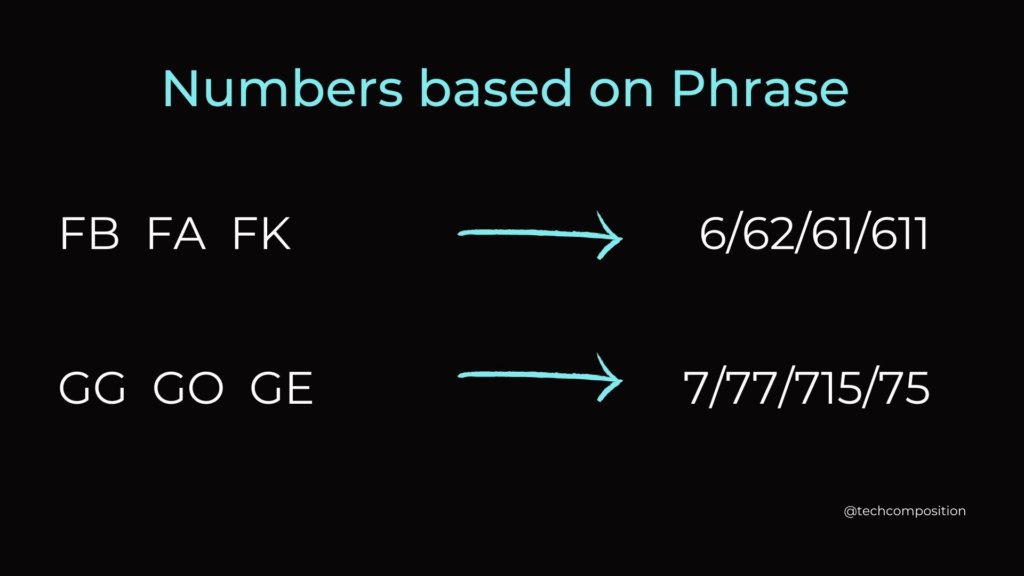
The reason why I emphasised the need to easily obtain your phrase from Part 1 is because numbers and special characters are going to be generated from them.
How do you link phrases to numbers? Simple, the alphabets, where A represents 1 and Z represents 26.
For the phrase you created for Facebook: FB, FA or FK, you can generate numbers based on each letter’s positioning in the alphabets.
Since all of these phrases start with F, your number generated can be 6, since F is the 6th letter in the alphabet.
If you want to go one more step, you can also generate a number that takes into account both letters in the phrase. FB = 62, FA = 61, FK = 611.
Another example: The phrases you create for your Google Account, GG, GO, or GE can generate 7, 77, 715, or 75.
I know, alphabet positions are hard to remember. But the security improvements you get with this method far trumps the slight inconvenience of a quick Google Search.
Part 4: Special Characters based on the number set in Part 3
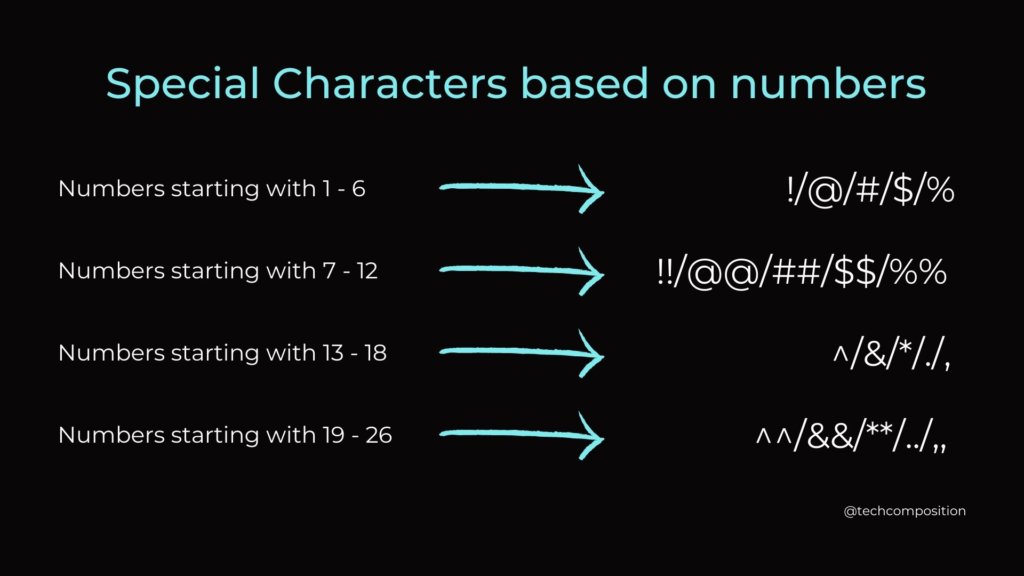
Next, the most important part of this structure: Special Characters, the hardest for hackers to guess.
Since there are a ton of special characters to choose from, how do we create a rule of when to use which?
A simple method is to choose 2 special characters, in this example, % and &.
Afterwhich, we decide when to use each of them based on the number you set in Part 3.
If we chose the numbers 6 and 2 for our FB phrase, we need to base the special character on either one of them.
We will choose the first number, 6 to illustrate.
| Position of first number set in Part 3 | Special character to use |
| 1 – 6 | % |
| 7 – 12 | %% |
| 13 – 18 | & |
| 19 – 26 | && |
Since our number 6 derived from the FB phrase is between 1 to 6, we will use the % character.
Of course, you can use either number to base your character on depending on your preference.
Ensure your set of special characters chosen can be easily remembered and found on your keyboard.
Putting them together
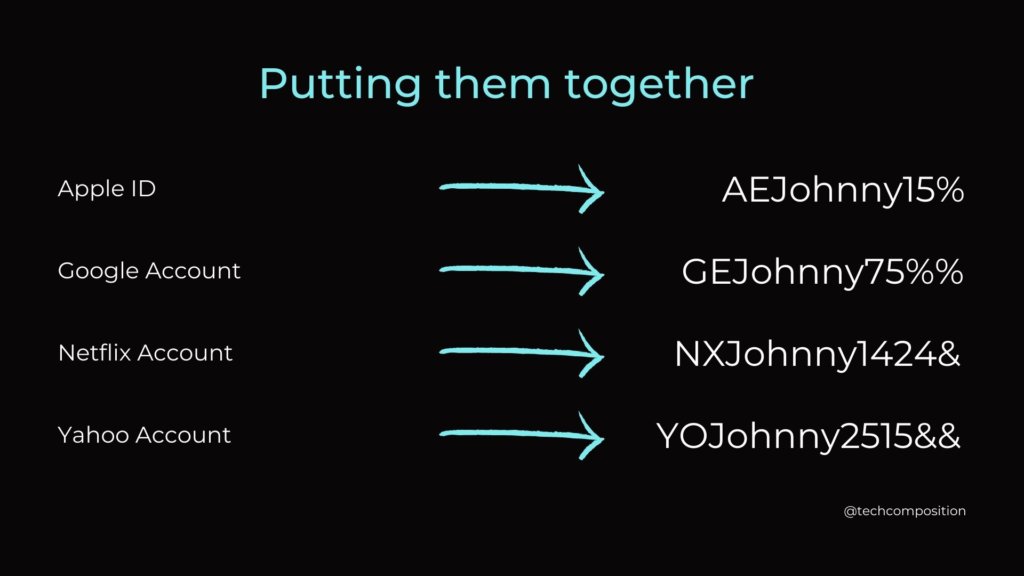
I know it seems a little jarring having to remember all of these, but stay with me, I will be providing plenty of examples to show you how easy it is to recall them.
The table below assumes that you use the start and end characters of the account name as your phrase, and you base the special character on the first number you choose.
It also assumes that you use the special characters % and &.
| Account Name | Apple ID | Google Account | Netflix Account | Yahoo Account |
| Part 1: Phrase derived from account name | AE | GE | NX | YO |
| Part 2: Common Phrase | Johnny | Johnny | Johnny | Johnny |
| Part 3: Numbers derived from Part 1 phrase | 1, 5 | 7, 5 | 14, 24 | 25, 15 |
| Part 4: Special Characters based on Part 3’s first number | % | %% | & | && |
| Password Generated | AEJohnny15% | GEJohnny75%% | NXJohnny1424& | YOJohnny2515&& |
There you go, unique passwords for every site.
To remember them, just refer to the structure that you created, keeping in mind the method you used to derive the phrase and the special characters you chose.
Conclusion
It may take some time for you to remember this structure of creating and recalling these structured passwords, but think about the alternative of using the same passwords repeatedly.
No matter how complex and secure your frequently reused password is, just one unencrypted database breach from any of your accounts will expose it to the entire internet.
This means possibly all of your accounts are at risk of being hacked from a single source of failure.
In fact, tech giants Google and Apple recommend using unique passwords for each site to increase your account’s security.
By using this easy to remember structure, we abolish the need to reuse or set insecure passwords.
What are your thoughts on this method of creating and remembering passwords? Leave them in the comments below.
Derrick (Yip Hern) founded Tech Composition to provide valuable insights into the tech and finance world. He loves to scour the web for the best deals and embark on software projects during his free time, a typical geek, right?



